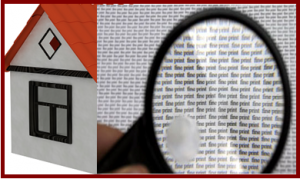 If you own a home, chances are you’ve got it insured, but few consumers fully understand their home insurance policies. There are six different types of home insurance policies, and while they are similar in form, they each have specific differences that you need to be aware of. All too often, consumers find out just how lacking their coverage is when they need to make a claim.
If you own a home, chances are you’ve got it insured, but few consumers fully understand their home insurance policies. There are six different types of home insurance policies, and while they are similar in form, they each have specific differences that you need to be aware of. All too often, consumers find out just how lacking their coverage is when they need to make a claim.
Educate Yourself About Your Home Insurance Policy
Reading the small print on your policy will not only help you learn about the coverage you carry on your home, it will also help you decide whether to switch insurance carriers to get more comprehensive coverage. It’s also important to make sure you’re getting all of the discounts you can on your policy. For example, some companies provide a discount for a home security system, and this discount can be significant.
Replacement Cost vs. Actual Cash Value
Insurance companies will indemnify you in two different ways – replacement cost and actual cash value. Your homeowner policy will indicate which type of coverage you have. All things considered, replacement cost is better coverage than actual cash value since it will help replace items in your home with similar items, rather than supplying you with the current market value of your property.
For example, let’s say you have a couch that is destroyed in a fire. With replacement cost, you will get the value of the couch back. With actual cash value, you will get the value of the couch minus any depreciation. However, for replacement cost to take effect, you must maintain accurate records and receipts of your purchase as well as a current home inventory list.
Your Home Insurance May Not Cover Everything
Your homeowner insurance comes with personal property coverage. This is intended to insure everything you own inside the dwelling, but not the dwelling itself. Typically, the amount of coverage is a percentage of the cost of the dwelling. For example, if your home were insured for $200,000 in replacement cost, your personal property inside your home would be insured for 60 percent of that value. Each insurance company calculates their personal property coverage differently, but this gives you an idea of what to expect.
However, if you have valuable items such as expensive jewelry, computers or fine art, your homeowner policy may not be sufficient to protect these items. Typically, most policies will have a limit of coverage, such as $2,500 per incident, for jewelry or firearms. If you have items that are more valuable, it is best to have a separate personal articles policy to adequately insure them.
Coverage Limits and Deductibles
Homeowner’s insurance is not open peril coverage – meaning that some types of damage won’t be covered. Read your policy carefully to determine whether you have coverage for a sewer backup, water damage, or even fire damage. Check your deductibles to be sure you are comfortable with the amounts. Some insurance companies have high deductibles – $2,500 or more – making it very difficult to recoup your losses if you have limited damage to your home.
Never be afraid to ask your insurance agent to explain the details of your coverage. If they won’t, look for an agent who is open, honest and willing to help you get the best coverage at the best price.
